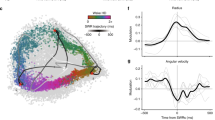Abstract.
Much evidence suggests that the mammalian thalamus is not merely a set of nuclei relaying signals to the cerebral cortex, but is engaged in two-way interplay with it. Three important features constrain ideas about the nature of this interplay: (i) thalamic projection neurones lack local axon collaterals; (ii) most cortico-thalamic projections have very long axonal conduction time; (iii) in the waking state the membrane potential of thalamic projections cells appears to be poised just beneath threshold for firing. It is proposed that cortico-thalamo-cortical pathways represent connections between different cortical loci which have higher security than the direct cortico-cortical route. Thus each thalamo-cortical projection neurone can have a singular and pivotal role in the activation of one or more cortical neural assemblies. The long delays of cortico-thalamic conduction suggest that the cortico-thalamo-cortical loop also plays a crucial role in the operation of time-structured neural assemblies (‘synfire chains’: Abeles), by providing a high-security link from one active node of the chain to nodes activated at a later time in the sequence. It is predicted that, in the waking animal, thalamic projection cells should have a response selectivity to complex percepts and concepts, conferred on them by the cortical assemblies in whose activation they participate.
Similar content being viewed by others
Author information
Authors and Affiliations
Additional information
Received: 30 November 1995/Accepted: 3 June 1996
Rights and permissions
About this article
Cite this article
Miller, R. Cortico-thalamic interplay and the security of operation of neural assemblies and temporal chains in the cerebral cortex. Biol Cybern 75, 263–275 (1996). https://doi.org/10.1007/s004220050293
Issue Date:
DOI: https://doi.org/10.1007/s004220050293




